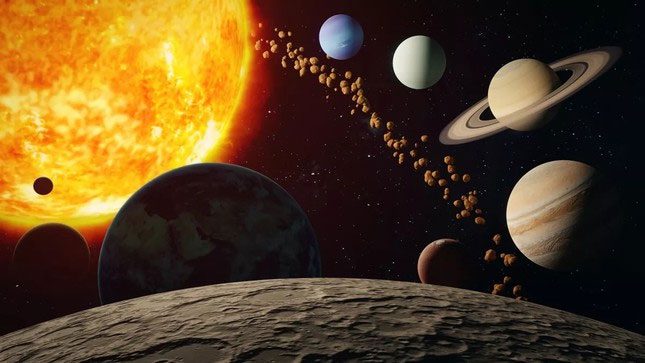A new analysis of chaos in the Solar System has revealed how to avoid collisions between planets over billions of years.
According to physical models, the interior of the Solar System is a chaotic mess. The new research may explain its relative stability.
The Chaos of the Solar System
The orbits of the inner planets of the Solar System, such as Mercury, Venus, Earth, and Mars, are highly chaotic, and models have suggested that these inner planets should have collided with each other. However, that has not happened.
The new research, published on May 3 in the journal Physical Review X, may finally explain why.

The interior of the Solar System is a chaotic mess.
Through an in-depth study of planetary motion models, researchers discovered that the movement of the inner planets is constrained by several parameters that act as a tether preventing chaos within the system.
Besides providing a mathematical explanation for the apparent harmony within the Solar System, the insights from this new research could help scientists understand the orbits of exoplanets around other stars.
Unpredictable Planets
The planets continuously exert gravitational forces on each other, and these small pulls constantly create minor adjustments to their orbits. The outer planets, which are significantly larger, can resist these smaller pulls and thus maintain relatively stable orbits.
However, the issue of the inner planets’ orbits remains too complex to solve accurately. By the end of the 19th century, mathematician Henri Poincaré proved that, mathematically, it is impossible to solve the equations governing the motion of three or more interacting bodies, commonly referred to as the “three-body problem.”
As a result, uncertainty in the initial details regarding the starting positions and velocities of the planets increases over time. In other words, two scenarios may occur where the distances between Mercury, Venus, Mars, and Earth are minimized, and in one case, the planets collide, while in the other, they diverge.
In 1989, Jacques Laskar, an astronomer and research director at the National Center for Scientific Research and the Paris Observatory in France, who is also a co-author of this new study, calculated that the Lyapunov time characteristic for the orbital dynamics of the inner Solar System planets is only 5 million years.
If the initial uncertainty regarding a planet’s position is 15 meters, then after 10 million years, this uncertainty would grow to 150 meters; after 100 million years, 9 more digits are lost, resulting in an uncertainty of 150 million kilometers, equivalent to the distance between Earth and the Sun.
While 100 million years may seem long, the Solar System itself is over 4.5 billion years old, and the lack of dramatic events—such as a planetary collision or a planet being ejected from all this chaotic motion—has left scientists puzzled.
Laskar then approached the problem differently: by simulating the orbits of the inner planets for the next 5 billion years, stepping from one moment to the next. He found only a 1% chance of a collision occurring between the planets. Using a similar approach, he calculated that, on average, it would take about 30 billion years for any planet to collide.
Dominance in Chaos
In their mathematical research, Laskar and his colleagues first identified the “symmetry” or “conserved quantity” in gravitational interactions that creates practical barriers to the chaotic wandering of the planets.
Renu Malhotra, a Professor of Planetary Science at the University of Arizona in the United States, who was not involved in the research, emphasized the sophistication of the mechanisms identified in the study. Malhotra noted that it is interesting that the planetary orbits of the Solar System exhibit particularly weak chaos.
In another study, Laskar and his colleagues are seeking clues about whether the number of planets in the Solar System has ever differed from what we see today. Despite the apparent stability today, whether this has always been true over billions of years before life evolved remains an open question.





















































